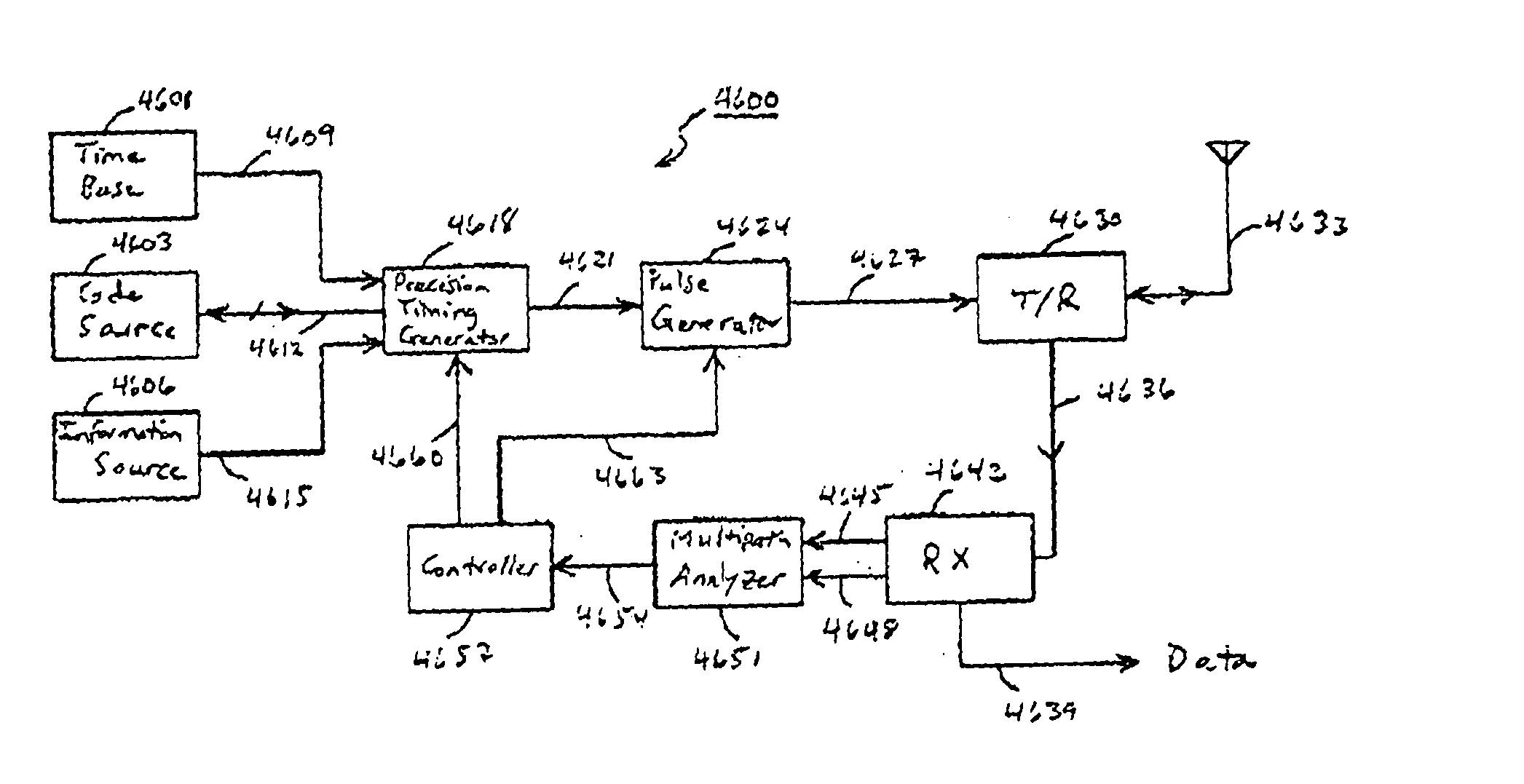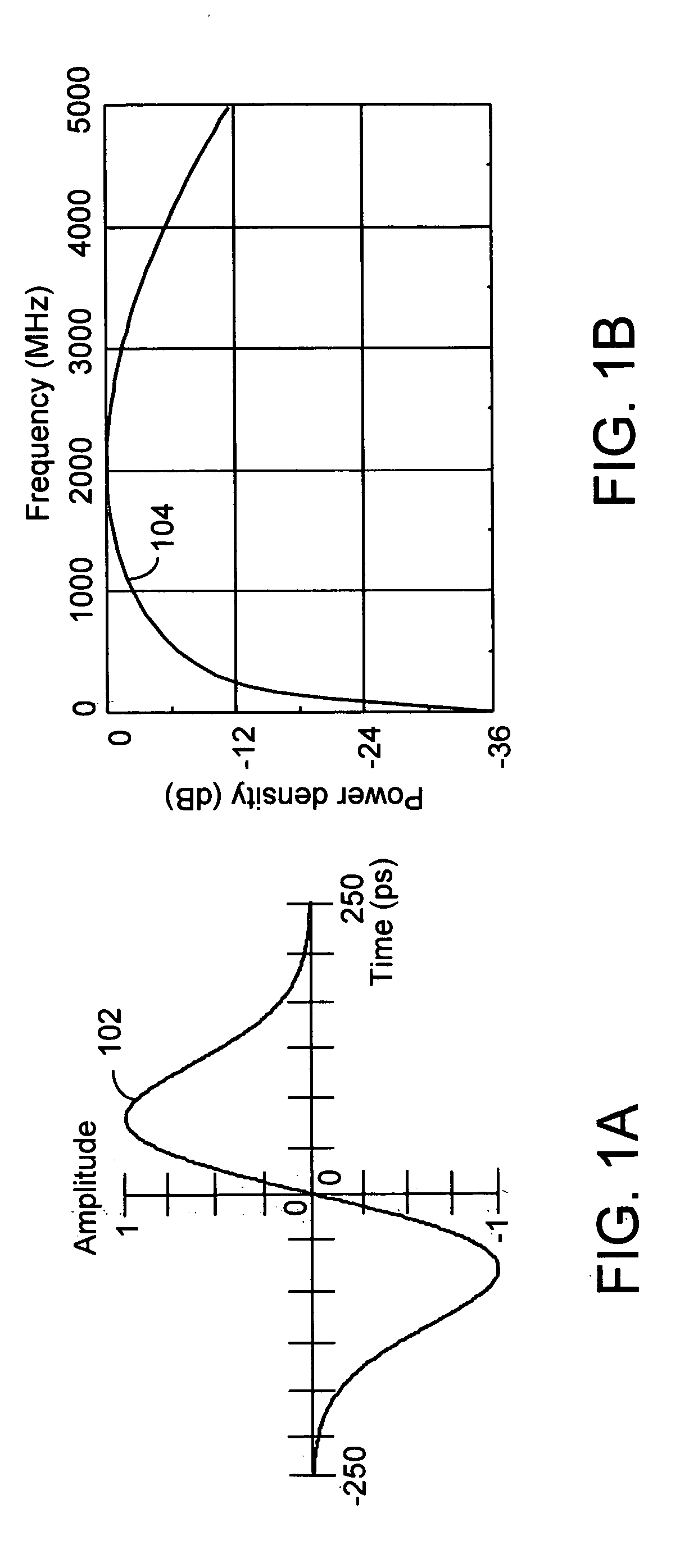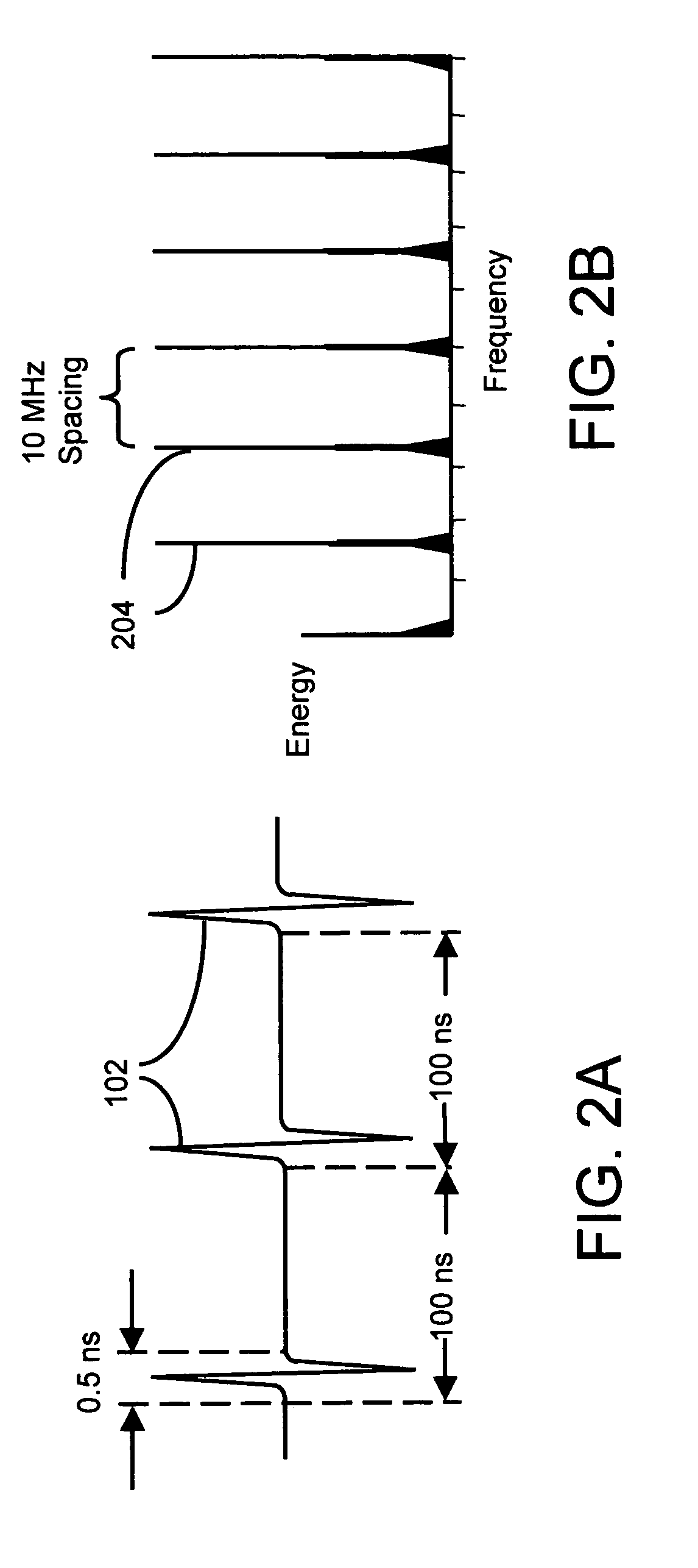Transmit-rake apparatus in communication systems and associated methods
a technology of communication system and signal-to-noise ratio, which is applied in the direction of transmission, electrical apparatus, etc., can solve the problems of occupying more physical space, brute force technique, and components with high power-handling capability usually cost more, so as to and improve the signal-to-noise ratio.
- Summary
- Abstract
- Description
- Claims
- Application Information
AI Technical Summary
Benefits of technology
Problems solved by technology
Method used
Image
Examples
first embodiment
[0289] In a first embodiment, the signal strength of the received signal is used as a performance measurement. The power control update, dP, is given by:
dP=K(Pref−PS1) [0290] where K is a gain constant; [0291] PS1 is the signal strength of received signal S1; [0292] Pref is a signal strength reference; and [0293] dP is the power control update (which is preferable in the unit of Volts).
[0294] The output level of transmitter 602A (of transceiver 902A) is therefore increased when PS1 falls below Pref, and decreased when PS1 rises above Pref. The magnitude of the update is linearly proportional to the difference between these two signals. Note that the power control update can be equivalently expressed as an absolute rather than a differential value. This can be achieved by accumulating the differential values dP and communicating the resulting output level P as follows:
Pn=Pn-1+dP, [0295] Where Pn is the output level (e.g., voltage level or power level) to be transmitted during the n...
second embodiment
[0307] In a second embodiment, the SNR of the received signal is used as a performance measurement. The power control update, dP, is given by:
dP=K(SNRref−SNRS1) [0308] where K is a gain constant; [0309] SNRS1 is the signal-to-noise ratio of received signal S1; and [0310] SNRref is a signal-to-noise ratio reference.
[0311] The power of transmitter 602A (of transceiver 902A) is therefore increased when SNRS1 falls below SNRref, and decreased when SNRS1 rises above SNRref. The magnitude of the update is linearly proportional to the difference between these two signals. Note that the power control update can be equivalently expressed as an absolute rather than a differential value. As described above, those skilled in the art will recognize that many alternative equivalent formulations are possible for calculating a power control update according to received signal SNR.
[0312] A control loop diagram illustrating the functionality of this embodiment will now be described with reference t...
third embodiment
[0315] In a third embodiment, the BER of the received signal is used as a performance measurement. The power control update, dP, is given by:
dP=K(BERS1−BERref) [0316] where K is a gain constant; [0317] BERS1 is the bit error rate of received signal S1; and [0318] BERref is a bit error rate reference.
[0319] Note that the sign is reversed in this case because the performance indicator, BER is reverse sensed, i.e., a high BER implies a weak signal. The power of transmitter 602A (of transceiver 902A) is therefore decreased when BERS1 falls below BERref, and increased when BERS1 rises above BERref. The magnitude of the update is linearly proportional to the difference between these two signals. Note that the power control update can be equivalently expressed as an absolute rather than a differential value. As described above, many alternative formulations are possible for calculating a power control update according to received signal BER.
[0320] Note that BER measurements span a large ...
PUM
 Login to View More
Login to View More Abstract
Description
Claims
Application Information
 Login to View More
Login to View More - R&D
- Intellectual Property
- Life Sciences
- Materials
- Tech Scout
- Unparalleled Data Quality
- Higher Quality Content
- 60% Fewer Hallucinations
Browse by: Latest US Patents, China's latest patents, Technical Efficacy Thesaurus, Application Domain, Technology Topic, Popular Technical Reports.
© 2025 PatSnap. All rights reserved.Legal|Privacy policy|Modern Slavery Act Transparency Statement|Sitemap|About US| Contact US: help@patsnap.com



